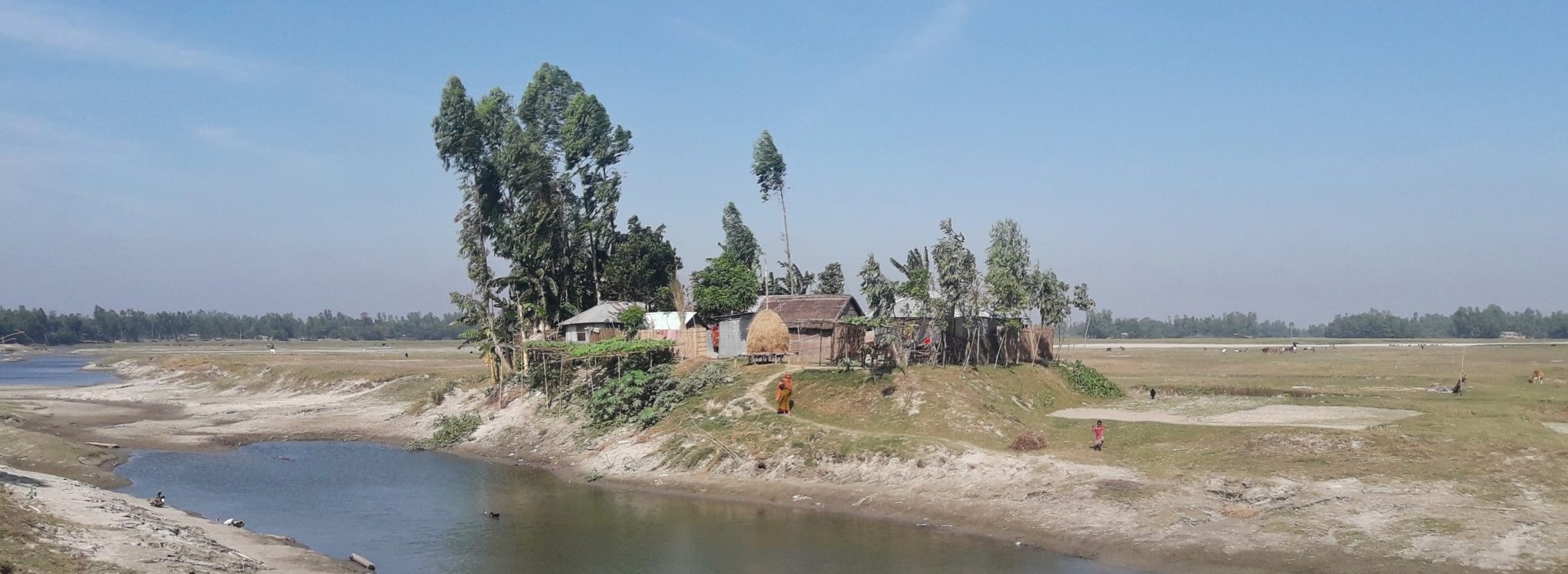Great to attend the annual Geology for Global Development (GfGD) annual meeting last week, all focussed around how geoscience can support the delivery of Sustainable Development Goal (SDG) 3: Good health and wellbeing. Might not seem such an obvious link, but geoscience intersects with SDG3 in a myriad of ways. Hydrogeologists can work to provide people with access to clean water (e.g. https://groundwater-relief.org/), geochemists can support with understanding air, soil and household pollution and geologists, with their knowledge of natural hazards, can work directly with communities to communicate and understand the health risks associated with hazards such as volcanoes, whilst working with politicians to implement resilience policies that consider geological hazards.
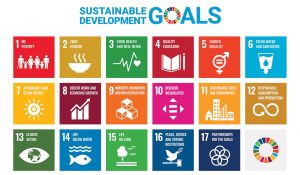
The conference was largely attended by students, which is (in a non-patronising way) great to see interests beyond the “pure” aspects that are often contained within UK geology degrees. Did make me feel pretty old mind! I do wonder, given the clear synergy between many of the SDGs and geoscience, whether UK universities are missing an opportunity to better integrate sustainability themes in courses and ensure that students have familiarity with sustainability issues across all SDGs. GfGD, with strong student support, is definitely helping to bridge some of the gap.
There were a few themes that emerged throughout the day, and some that definitely provoked thoughts.
(1) Mental Health
Ilan Kelman (UCL) spoke about how climate change is changing the anchor of traditional knowledge, which can often lead to increased anxiety, depression, alcoholism and domestic abuse. Without knowledge of why this is happening, and what the impacts are likely to be, what is the impact on mental health? Ilan posed the questions:
- How do we communicate climate change to people who don’t have translations for climate change?
- Does communication about climate change potentially increase anxiety for people if they do not have the means to adapt to change?
Ilan highlighted the annual Lancet Countdown on Health & Climate Change which tracks the impact of global heating on health (www.lancentcountdown.org). This year’s (2019) report acknowledged that indicators to track the mental health effects of climate change are difficult to establish and whilst “…many varied links have been identified between climate and mental health, they are highly socially and culturally mediated… linking climate change and mental health outcomes remains elusive, yet quantifying these effects is of clear importance.”2
Cecilia Reed presented on her experience with communities on the island of La Palma (Canary Islands). The island has been well documented, particularly in the UK press who have a tendency towards using words such as “chaos”, “havoc” and “misery” when communicating hazards, as having a volcano with the potential to cause a tsunami. Cecilia spoke about the thought of the tsunami perpetuating a community’s already existing ongoing insecurities as a result of limits to community capability cause by long term vulnerability. Something to consider when working to communicate hazards – does sharing knowledge of an impending hazard actually increase anxiety if accessible solutions cannot be presented?
These presentations led to thoughts of recent-ish experiences working with communities in Northern Bangladesh. Here, people commonly live on chars, river islands constructed through sedimentation and “maintained” through human processes. In one location, the community were aware of climate change, and that it may have impacts upon the rivers next to their homes. One lady showed us how she was using trees to stabilise the sandy slopes on which her home was built, mentioning climate change and how this would impact the rivers as reasons for planting more trees. Unsure as to whether the additional knowledge of climate change was causing more or less anxiety, but certainly having the knowledge meant that the family could put mitigation measures in place.
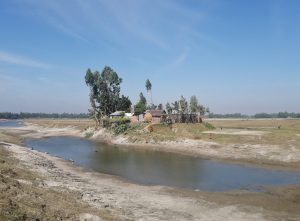
(2) Geoscience informing policy & humanitarian response
Do health ministers think about the health impacts of breathing in volcanic ash? If they’re not thinking of it, mitigation measures can’t be established prior to being needed. Claire Horwell spoke about her experiences advising the UK government on the respiratory hazards of volcanic ash and conducting research on respiratory protection which informed public health guidelines and humanitarian response strategies. So much of the humanitarian response to disasters is exactly that, a response. Geoscientists can play a key part in informing adaption and preparedness policies long-term, and whilst that can be slow, supporting communities by talking about hazards and mititgation measures can be a relatively fast process.
Currently, there is no provision under international refugee conventions covering environmental or climate-related displacement. There are numerous examples of communities who have been relocated post-disaster, and those who are facing relocation or substantial changing to their lifestyles (e.g. Kiribati in the Pacific3, Newtok, Alaska4). Additionally, in the post-disaster or conflict context, it often seems to be an opportunity to push radical policy5 or move people to areas that are exposed to significant risks6. Geoscientists have a place here, to use their hazard & geotechnical expertise to advocate for people to ensure they are not exposed to increased risk and to support with hazard mitigation measures, whilst continuing to work with communities on the latter also.
(3) Defining risk
Much of the day was talking about natural hazards as a risk, particularly to health given the theme of the conference. However, have worked in many places where what is perceived as a risk is essential for livelihoods. For example, in northern Bangladesh and in the Himalayan foothills in Nepal – flooding rivers are welcomed because it brings fish and fertile land. In Central America, people often live on the flanks of active volcanoes because the soils are enriched and good for agriculture. Volcanoes often also have cultural and religious significance.
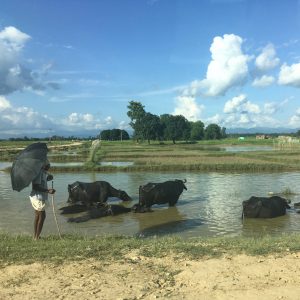
Our own individual perceptions of risk, and privileges, inform our views of hazard mitigation. Prof Kelman asked: “who has an umbrella?” there’s a privilege right there – we know what the weather is because we have access to information, and are in the position to purchase something to protect ourselves. Interventions should be framed around recognising that livelihood resumption is an important part of supporting recovery. Additionally, mitigation measures put in place, for instance exclusion zones around volcanoes, may fail if there are other pressures beyond the hazard, such as livelihoods, protection of homes or remaining with a community.7
So probably more questions raised that answered from the conference, but as someone without any kind of formal training in disaster risk reduction or hazard mitigation, it certainly provided lots of food for thought. Perhaps the most overwhelming takeaway from the conference is that working solely within your discipline cannot address the problems that society faces today. Interdisciplinary work for the win!
References
1Watts N et al. 2019. The 2019 report of The Lancet Countdown on health and climate change: ensuring that the health of a child born today is not defined by a changing climate. Lancet 394, 1836–1878. [PDF – Free registration required]
2Berry HL, Waite TD, Dear KBG, Capon AG, Murray V. 2018. The case for systems thinking about climate change and mental health. Nature Climate Change 8: 282–90. [PDF – £]
3Bowers M. 2017. Waiting for the tide to turn: Kiribati’s fight for survival. The Guardian: https://www.theguardian.com/world/2017/oct/23/waiting-for-the-tide-to-turn-kiribatis-fight-for-survival
4Welch C. 2019. Climate change has finally caught up to this Alaska village. National Geographic: https://www.nationalgeographic.co.uk/environment-and-conservation/2019/10/climate-change-has-finally-caught-alaska-village
5Ferrando T. 2018. ‘Land grab’ on hurricane-hit Barbuda could leave the island almost entirely owned by banks. Policy Bristol Hub: https://policybristol.blogs.bris.ac.uk/2018/06/01/land-grab-on-hurricane-hit-barbuda-could-leave-the-island-almost-entirely-owned-by-banks/
6Aljazeera English 2019. Bangladesh says thousands of Rohingya agree relocation to island. https://www.aljazeera.com/news/2019/10/bangladesh-thousands-rohingya-agree-relocation-island-191020074723514.html
3Barclay J, Few R, Armijos Burneo T. 2019. Volcanoes kill more people long after they first erupt – those deaths are avoidable. The Conversation: https://theconversation.com/volcanoes-kill-more-people-long-after-they-first-erupt-those-deaths-are-avoidable-122742
